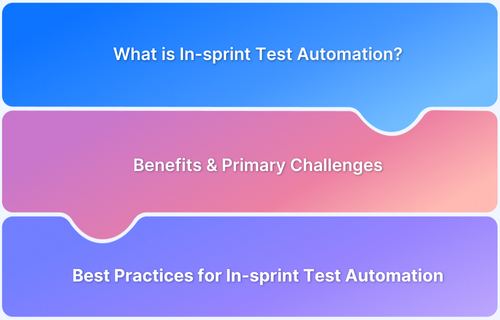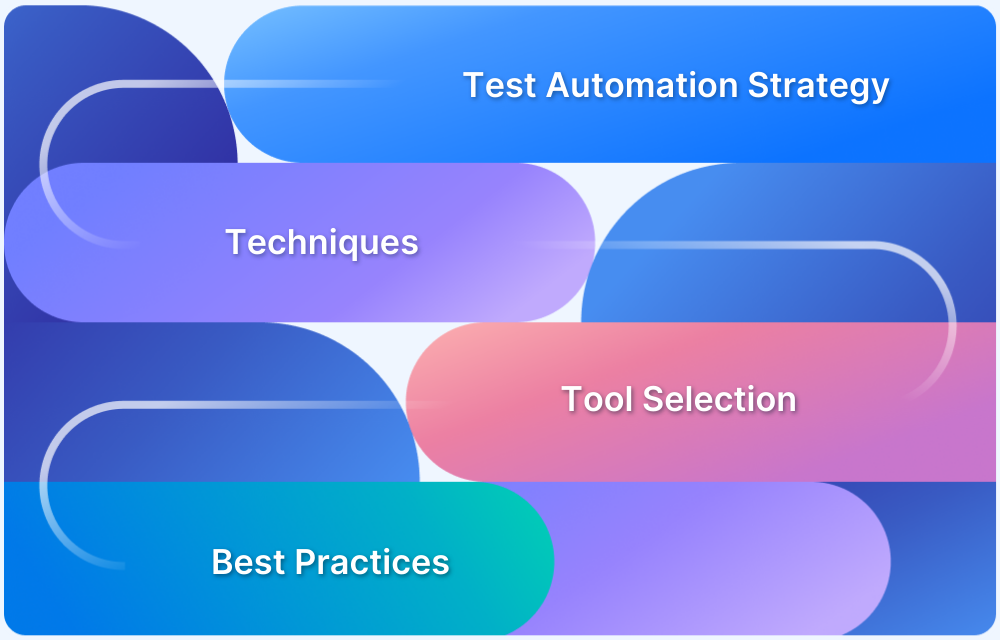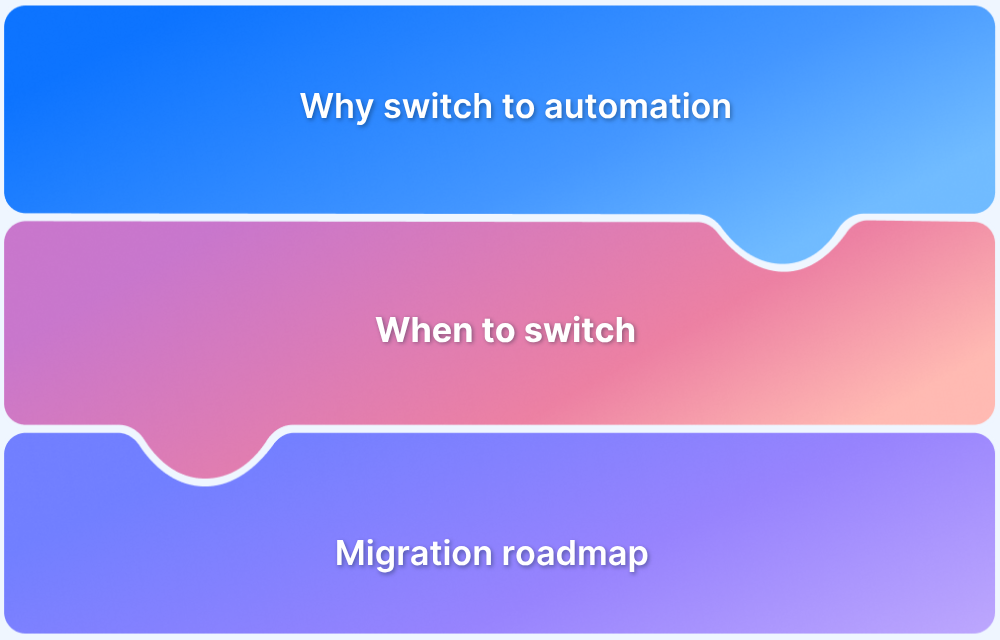Is your automation strategy struggling to scale? As organizations push for faster release cycles, scaling test automation becomes a critical challenge.
While automation offers significant benefits—such as increased efficiency and reduced manual errors—many teams struggle to expand their automation efforts across complex workflows. In fact, only 24% of organizations have automated 50% or more of their test cases, highlighting the scaling gap many face.
Overcoming these challenges requires optimizing your automation framework, ensuring seamless integration with CI/CD pipelines, and addressing performance bottlenecks. With the right strategy and tools, you can turn automation into a sustainable engine for faster, higher-quality software delivery.
This article explores the key automation and scaling challenges faced by QA teams and practical strategies to overcome them.
The Need to Address Automation & Scaling Challenges
Modern organizations cannot afford to treat software testing as an afterthought. In the era of DevOps and Agile, both speed and quality are equally important. Yet, testing at scale brings several challenges that, if ignored, can severely impact delivery timelines and product stability.
Key reasons why addressing these challenges is critical:
- Selecting the right automation tools – Without the right fit, teams face compatibility issues, poor scalability, and limited cross-platform coverage.
- Maintaining automation scripts – Frequent UI and feature changes can make scripts brittle, requiring constant updates and slowing down test cycles.
- Testing at scale challenges – Running tests across multiple devices, browsers, and environments creates execution and infrastructure bottlenecks.
- Integrating testing into CI/CD pipelines – Inefficient integration leads to slow builds, bottlenecks, and reduced developer confidence.
- Risk of not addressing challenges – Leads to flaky tests, inconsistent coverage, wasted infrastructure spend, and delayed releases.
Top Challenges in Test Automation and Scaling
Here are some of the top test automation and scaling challenges:
Challenge 1: Selecting the Right Automation Tools
The foundation of any successful automation strategy lies in selecting the right automation tools. With hundreds of options available—ranging from open-source frameworks like Selenium to commercial platforms offering cloud-based execution—the decision can feel overwhelming.
The wrong choice can result in compatibility issues, steep learning curves, or limited scalability. Teams must evaluate tools based on their tech stack, team skillsets, ease of integration, cross-browser/device coverage, and long-term scalability.
Challenge 2: Maintaining Automation Scripts Over Time
One of the biggest ongoing struggles in test automation is maintaining automation scripts. As applications evolve, UI changes, business logic updates, and new features frequently break existing scripts.
Without a proactive maintenance strategy, test suites become brittle, requiring constant firefighting. Practices like modular script design, using page object models, and employing self-healing locators can reduce maintenance overhead and improve long-term reliability.
Challenge 3: Overcoming Testing at Scale Challenges
Testing at scale challenges emerge when a product expands in complexity and needs extensive coverage across platforms and devices. Running thousands of tests in parallel, ensuring consistency across environments, and maintaining infrastructure to support high-volume execution require careful planning.
Teams must also optimize test prioritization to avoid wasting cycles on low-value tests. Scalable test platforms and cloud-based infrastructure play a crucial role in meeting these demands efficiently.
Challenge 4: Managing Parallel Testing Complexity
Parallel execution accelerates test cycles but brings its own challenges. Managing parallel testing complexity involves handling dependencies between tests, avoiding conflicts with shared test data, and ensuring proper environment setup for each execution.
Failure to manage these nuances often leads to false positives or incomplete coverage. A well-structured test suite and isolated environments are key to unlocking the benefits of parallel execution.
Challenge 5: Handling Dynamic UI Elements in Automated Tests
Modern applications rely heavily on dynamic content—elements that load asynchronously, change identifiers, or appear conditionally.
Dynamic UI element handling is one of the most frustrating challenges for QA engineers, often leading to unstable or flaky tests. Strategies like explicit waits, resilient locators, and AI-driven test element recognition can significantly reduce failures. Investing in tools that adapt to UI changes automatically helps improve script stability and saves maintenance costs.
Challenge 6: Dealing with API Test Failures
APIs are the backbone of modern applications, and handling API test failures is critical to ensuring reliability. Failures may arise due to response delays, network instability, authentication issues, or mismatches in schema.
Teams must adopt robust validation mechanisms, clear logging, and retry logic to minimize false negatives. Coupling API testing with functional and integration testing provides end-to-end coverage and highlights issues earlier in the pipeline.
Read More: Overcoming Key Challenges in Test Automation
Challenge 7: Integrating Testing into CI/CD Pipelines
In today’s DevOps world, integrating testing into CI/CD pipelines is non-negotiable. However, doing it effectively is tricky. Tests must run quickly, reliably, and at every stage of deployment without creating bottlenecks. Poorly integrated suites can slow down builds and frustrate developers.
The solution lies in modular test design, categorizing tests by execution priority (smoke, regression, performance), and ensuring they can run seamlessly on demand in CI/CD environments.
Challenge 8: Managing Version Control for Test Cases
Just like application code, test cases evolve. Managing version control for test cases ensures teams can track changes, roll back when needed, and maintain synchronization across branches.
Without this discipline, QA teams risk running outdated scripts or losing visibility into test history. Integrating test repositories with Git and using branching strategies similar to development workflows helps maintain consistency and traceability.
Challenge 9: Ensuring Consistent Test Coverage
Automation is not about the sheer number of tests but about ensuring consistent test coverage. Many teams fall into the trap of automating easy cases while missing complex but critical scenarios. Coverage gaps can create blind spots, leading to production bugs.
Mapping test cases directly to business requirements and using coverage analysis tools ensures that all critical paths are validated, and teams have confidence in the release quality.
Challenge 10: Scaling Test Infrastructure to Meet Growing Demands
As applications grow, so does the testing burden. Scaling test infrastructure is a persistent challenge, especially when execution must span multiple browsers, devices, and operating systems. Maintaining an in-house lab is costly and resource-heavy.
Cloud-based test infrastructure provides a scalable alternative, allowing teams to run thousands of tests in parallel on real devices and browsers without the overhead of managing physical environments.
Selecting the Right Automation Tools for Your Testing Needs
Selecting the right automation tools is not just a technical choice—it’s a strategic decision that directly impacts efficiency, scalability, and quality. Teams require solutions that can adapt to evolving needs, reduce maintenance, and integrate seamlessly into modern development workflows.
What the right tools should deliver:
- Dynamic UI element handling: Support for resilient locators and self-healing tests to reduce flakiness.
- Parallel testing complexity management: Ability to run large test suites simultaneously without conflicts.
- CI/CD pipeline integration: Smooth compatibility with popular systems like Jenkins, GitHub Actions, or Azure DevOps.
- Testing at scale challenges solved: Reliable execution across diverse environments without overloading infrastructure.
Why BrowserStack Automate is a strong choice:
- Cloud-based execution eliminates the need to maintain physical infrastructure.
- Provides instant access to thousands of real devices and browsers for cross-platform coverage.
- Robust integrations with leading CI/CD tools ensure faster, continuous feedback loops.
- Helps reduce script maintenance overhead and accelerates release cycles.
With so many options available, choosing the right automation tool can be a challenge. Our experts can help you select the perfect tools that align with your goals and scale your automation efforts effectively.
Get Expert QA Guidance Today
Schedule a call with BrowserStack QA specialists to discuss your testing challenges, automation strategies, and tool integrations. Gain actionable insights tailored to your projects and ensure faster, more reliable software delivery.
Conclusion
Software testing automation is a necessity, but scaling it effectively requires overcoming multiple challenges. From maintaining automation scripts and handling dynamic UI elements to ensuring consistent test coverage and scaling infrastructure, each hurdle can significantly impact delivery speed and product quality.
By carefully selecting the right automation tools, integrating seamlessly with CI/CD pipelines, and adopting cloud-based solutions, teams can turn these challenges into opportunities for growth. Ultimately, overcoming automation and scaling challenges is not about testing more, but about testing smarter.






